Morganite and moissanite sound extremely similar, but they are very different stones in all aspects, including appearance and origin–actually, they could not be any more dissimilar.
Learning about the differences, pros and cons, and factors to consider when choosing between the two will help you decide the best choice for any jewelry design. This comprehensive blog post will assist you in making an informed choice.
What is Morganite?
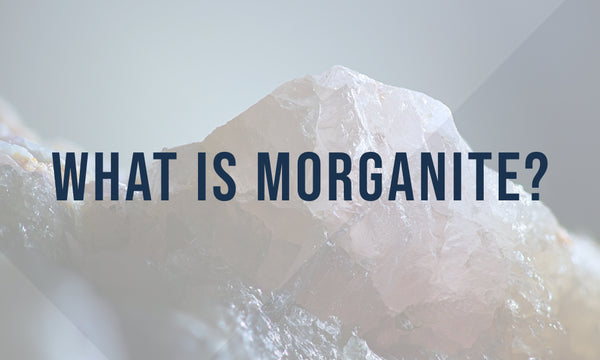
Morganite is the semi-precious pink variety of the beryl mineral family. This makes morganite a relative stone to emerald (the precious green variety), aquamarine (oceanic bluish-green, semi-precious), golden beryl (appears as citrine or golden beryl), and goshenite (colorless like rock crystal quartz and white topaz).
Characteristics of Morganite
Morganite exhibits a light pink to blush pink to deep salmon pink and may be mistaken for kunzite, also a semi-precious pink stone from another mineral family, spodumene. Morganite has a chemical composition of Be3Al2(SiO3)6. Beryl is a mineral composed of beryllium aluminum silicate with trace elements coloring the varieties.
Gems and mineral hardness or the "ability to be scratched" is measured on the Mohs scale, helping identify the mineral. The Mohs scale rates these materials from 1-10, with a diamond famous for its hardness rating a 10/10. Talc is a 1 and is considered extremely soft.
Morganite, like all other beryl, rates 7.5-8 on the Mohs scale. This means it is a relatively hard and durable gemstone, perfect for everyday wear.
Morganite has a low refractive index measuring 1.57 – 1.58. This means it has less fire than a lot of other stones, such as moissanite and diamond.
Popularity & Use of Morganite
Morganite is the pink semi-precious variety of the mineral family beryl, which is an important mineral family for the jewelry industry because of its assortment of popular varieties. Morganite, in particular, has been a go-to in recent years for those who love pink stones.
Morganite may be marketed as pink beryl or pink emerald depending on the seller. These terms aim to increase marketability for this stone. Calling morganite pink emerald is against the FTC, because emerald is a precious stone and morganite is semi-precious, misleading the customer with its actual value and rarity.
Fun fact: Did you know that Morganite is named after J.P. Morgan?
What is Moissanite?
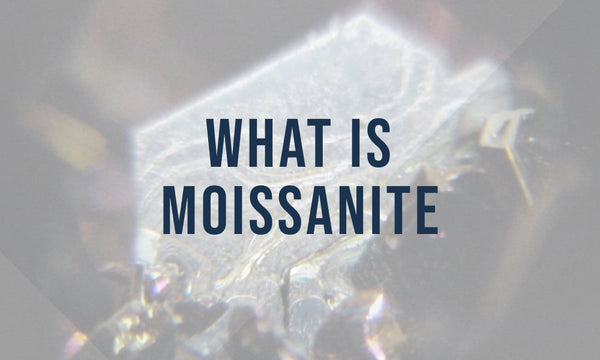
Natural moissanite was discovered in Arizona by Nobel Prize-winning chemist Dr. Henri Moissan in 1893, hence the name moissanite. Natural moissanite is a very rare mineral, and is typically found in extremely small quantities in certain types of rocks, such as kimberlites and lamproites, as well as in meteorites.
Because of its rarity, synthetic moissanite was created in a laboratory in the late 1990s. Moissanite is composed of silicon carbide (SiC), with a carbon atom surrounded by four silicon atoms in a tetrahedral form.
Characteristics of Moissanite
Did you know moissanite is considered to be the world’s most brilliant gemstone, displaying an incredible sparkle and fire, even more than a diamond?! This is because moissanite has a high refractive index of 2.65 to 2.69 with an adamantine to metallic luster.
Moissanite also displays highly dispersive double refractivity (fire). This phenomenon can be seen with the facet junctions doubling next to each other, easily visible under magnification.
Moissanite rates 9.25 on the Mohs hardness scale, making moissanite a very practical option for an engagement ring, wedding band, anniversary ring, or promise ring for the long term.
Moissanite’s value is determined by using the 4Cs scale, which is the same scale developed for diamond grading by the Gemological Institute of America GIA). This includes color, clarity, cut, and caratage.
The color scale consists of D-E-F (colorless), G-H-I (near colorless), and J-K (faint color), with more apparent color after K.
The clarity scale rates from F (Flawless) to I3 (highly included) with many clarity grades within this range. Lower quality moissanite contains thin, needle-like inclusions from the synthesized formation process.
Popularity and Uses of Moissanite
Moissanite is a popular diamond alternative due to its hardness, brilliance, and lower cost than natural diamonds. Moissanite is an affordable, budget-friendly alternative to diamonds, even though it is not the exact man-made counterpart–this is because moissanite is the synthetic version of natural moissanite.
Moissanite is commonly set into fine metals, including rose gold, yellow gold, white gold, and platinum sold in fine jewelry stores and other establishments with fine jewelry. Choosing a moissanite engagement ring, moissanite wedding band, moissanite promise ring, and more makes a statement in eco-friendly luxury. Check out our "BAD" CUSTOM MOISSANITE RING 14K ROSE GOLD.
Morganite vs Moissanite: A Comparison
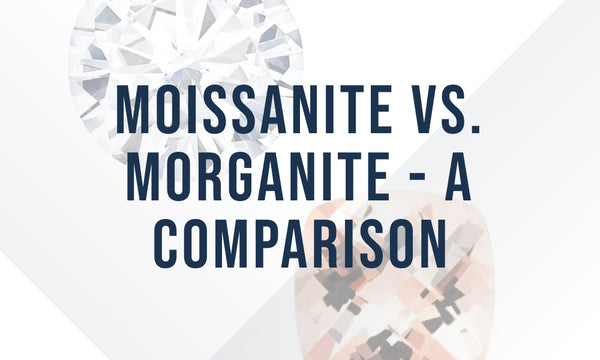
The following will provide a breakdown comparison of these two very different stones.
Appearance
Morganite has low brilliance when compared to moissanite. Morganite is the name for pink beryl, and is earth-mined. Morganite is commonly heat treated removing color zoning and other color irregularities, creating an overall saturated hue.
Moissanite is a high-quality lab grown stone mimicking the fire and sparkle of a diamond. It is often used as a budget-friendly alternative to diamonds, but is beautiful in its own right.
Cost
The cost of moissanite and morganite can vary depending on various factors, such as the size, quality, and source of the gemstone (moissanite is made in a lab, and morganite is sourced from the earth).
Moissanite is typically less expensive than morganite. But this doesn't always take the 4Cs into account concerning moissanite. A larger carat moissanite with high quality can be priced higher than a morganite.
Availability and Rarity
Moissanite and morganite differ with their availability and rarity because of their origins.
Moissanite is lab-created. It is readily available in a variety of sizes, shapes, and caratages, also quality. Synthetic moissanite is considered a relatively common stone. Natural moissanite, on the other hand, is very rare and uncommon and also very expensive.
Morganite is sourced from Brazil, Madagascar, Afghanistan, and other countries. While it is not as rare as some other gemstones or as expensive, it is less common than synthetic moissanite.
Morganite may be considered more rare than moissanite because it is from the earth and moissanite is created in a lab. However, neither are rare.
Moissanite has quality factors to consider (as mentioned above), assigned with value dependent on the 4Cs.
In conclusion, moissanite and morganite are readily available. This in turn, doesn't affect price or accessibility.
Durability
Moissanite and morganite are two different types of gemstones with vastly different physical, chemical, and optical properties, including their durability.
Moissanite is extremely hard, with a rating of 9.25 on the Mohs scale of mineral hardness. Moissanite is heat-resistant and durable, which makes it a long-lasting stone meant to last a lifetime.
Morganite is a softer gemstone with a hardness rating of 7.5-8 on the Mohs scale, making it considerably less durable than moissanite. Morganite can scratch or chip easier--even though both can get damaged if treated improperly. Morganite may require more care and attention than moissanite.
When it comes to durability, moissanite is a much harder and more durable stone than morganite. Both stones can complement any jewelry collection. They should both be treated with attention, taking care to not to damage the stone, exposing it to chemicals, and other harsh environmental factors.
Sustainability and Environmental Impact
Grown in a Lab
Lab-created moissanite is made with advanced technology in a controlled environment using a highly pressurized process with heat, painstakingly producing a gem after months.
Lab production generally involves fewer environmental impacts than mining natural gemstones like morganite. Synthetic moissanite is not associated with any human rights issues or conflicts like diamonds and other stones, which can sometimes be a concern with the harsh working conditions and labor usage.
Mined from the Earth
Morganite beryl is naturally occurring, mined from the earth. The process of mining morganite, like other gemstones and diamonds, can have significant environmental impacts, including soil erosion, deforestation, and water pollution. Mining has long been associated with human rights issues, including exploitation of workers and unsafe working conditions under untold hours of labor in dangerous, hazardous environments.
In conclusion moissanite is a more environmentally friendly option than morganite because of its lab origin.
Care and Maintenance
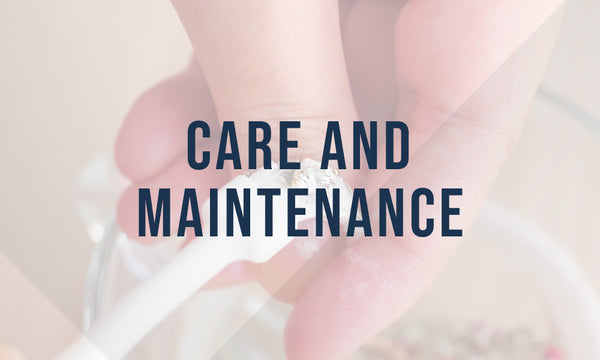
Both moissanite and morganite are durable and hard, but require care and maintenance to keep them in good condition. Here are some tips for both stones:
- Cleaning: Both moissanite and morganite can accumulate dirt, oil, bacteria, and other debris, affecting their appearance, causing them to lose their sparkle and beauty. Using the at-home method every 2-3 weeks with warm soapy water and a soft brush will remove this residue. Please note: Morganite may be safe for ultrasonic cleaners and liquid cleaners depending on the metal. Consult your jewelry professional for more information BEFORE placing morganite in any chemical solution.
- Avoid harsh chemicals, household cleaners, and abrasive materials: Moissanite and morganite can be permanently damaged by coming into contact with harsh chemicals, such as bleach or other cleaning agents. Be sure to remove your jewelry before swimming in a chlorinated pool, using household cleaners, scouring pads, etc.
- Proper storage: Storing moissanite and morganite jewelry in a dry, cool place, separating it from other jewelry prevents scratching or damage. Placing your jewelry in jewelry boxes and bags then a drawer will prevent any potential pitfalls.
- Avoid high-impact activities and exercise: While moissanite and morganite are durable, they can still be damaged by high-impact activities like sports or heavy lifting. No gemstone is indestructible--all can be chipped, damaged, broken, or cracked under duress. Removing your jewelry before any strenuous activities and leaving it home is the best option.
- Professional cleaning, maintenance, and repair: If your moissanite or morganite jewelry becomes dull or damaged/broken, or worn out-looking with scratches. dents, or other issues, taking it to a professional jeweler for cleaning or repair will help restore its sparkle and brilliance.
Popularity & Usage
Morganite and moissanite have gained popularity in recent years as alternatives to traditional diamond engagement rings, attracting those who seek something less common. Morganite is particularly popular as a center stone solitaire, just like moissanite.
Both are bezel and prong set into other types of jewelry, such as hoop earrings, necklaces, pendants, and bracelets. Morganite can be set with diamonds or other stones for a multi-stone appearance.
Moissanite is typically set with other moissanite stones not mixed with diamonds, like our 9MM MOISSANITE HALO STUD EARRINGS 14K.
Factors to Consider When Choosing Between Morganite and Moissanite
Here are some factors to consider when choosing between morganite and moissanite:
- Hardness: They are both hard and durable. Moissanite is more durable and less likely to get scratched or damaged than Morganite (see above).
- Color: Morganite is a semi-precious pink stone of the mineral variety of beryl. Moissanite is a colorless or near-colorless high-quality lab-grown alternative for a diamond, mimicking natural moissanite.
- Brilliance and fire: Moissanite has the highest brilliance and fire of all other stones, including diamond. Morganite has a soft, illuminating pink glow.
- Price: Price is relative when these stones are taken into considering. Size and quality is taken into accountability.
- Rarity: Neither are especially rare.
Importance of Personal Preferences and Lifestyle
Some people may prefer the feminine blush tone of morganite, while others may adore the scintillation of diamonds and moissanite.
Do you want incredible fire? Moissanite may be the better choice for those who love diamond and diamond-like stones. Do you love "pretty in pink?" Morganite is perfect for those who love pink and pink gemstones.
Frequently Asked Questions
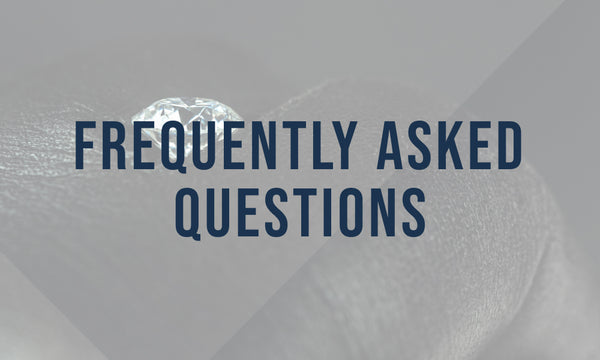
Does moissanite look like a real diamond?
At first glance, moissanite may appear as a natural diamond, but it is more brilliant with its striking appearance and unique optical properties. Moissanite is perfect for those who are seeking a natural diamond alternative. Moissanite is a lab-created version of the natural moissanite, not diamond, so it has its own attributes, making it very special. If you are seeking a diamond-like gem, moissanite is a great choice.
What are the most popular cuts?
Round brilliant cut/round cut, marquise, radiant/square radiant, emerald, princess cut/square cut, baguette cut, pear shape, cushion, Old Mine/Mine cut are all popular selections.
The Bottom Line
Morganite and moissanite sound extremely similar in name, but they are very different stones in all aspects, including appearance and origin. Moissanite is a lab-created version of natural moissanite, frequently used as a high-quality diamond alternative in any jewelry design. Moissanite is an eco-friendly option for those seeking something more sustainable than natural diamonds, a process that disrupts the environment with harsh work conditions.
Are you in search of a soft pink stone? Morganite is an affordable, high-quality selection that adds color to any jewelry. Do you love sparkles? Moissanite has considerably more fire than morganite. Both stones are available at affordable price points.




































































